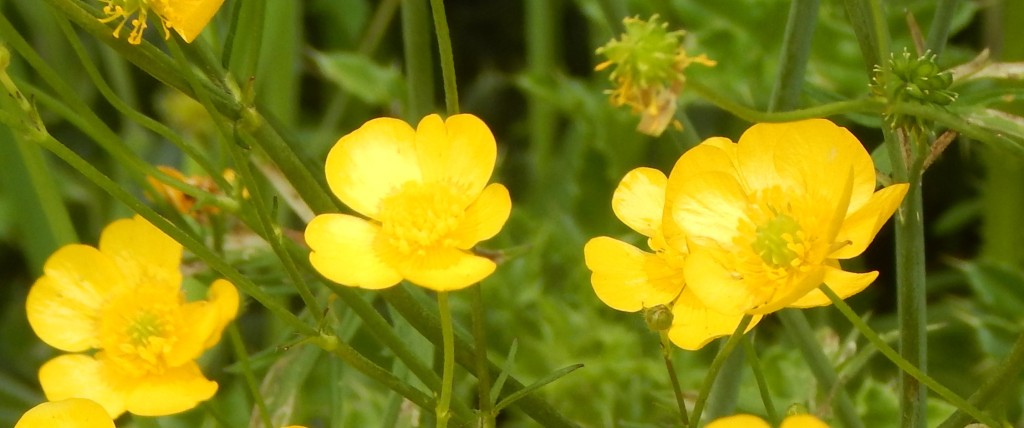
[296] Ranunculus repens, Creeping Buttercup
Ranunculus bulbosus, Bulbous Buttercup
Ranunculus acris, Meadow Buttercup
Ranunculus aquatilis, Water-crowfoot
Introduction
There are several species known as Buttercups from the genus Ranunculus found in the UK. Ranunculus repens, Creeping Buttercup, is the most common. Ranunculus bulbosus, the Bulbous Buttercup, and Ranunculus acris, the Meadow Buttercup, are also common and widespread. They are familiar from their flowers which are bright yellow, sometimes taken as examples of a typical flower. Most ordinary people would just call them all Buttercups.
The 600 species of Ranunculus also include the subgenus Batrachium (sometimes considered a separate species,) containing water plants known as Water-crowfoots (or Water Crowfoots, or even Water Crowfeet!) I will take Ranunculus aquatilis as an example.
Ranunculus repens is also called Creeping Crowfoot or Sitfast.
Ranunculus acris is also called Tall Buttercup, Common Buttercup or Giant Buttercup.
Ranunculus aquatilis is the Common or White Water-crowfoot
Taxonomy
Kingdom – Plants
Division – Vascular Plants
Class – Angiosperms (Flowering Plants)
Order – Ranunculales
Family – Ranunculaceae
Subfamily – Ranunculoideae
Tribe – Ranunculeae
Genus – Ranunculus
Scientific Names – See text
There are many cultivated species, hybrids and varieties
Name
There are some possible derivations of the name buttercup but it clearly comes from yellow colour of its cup-shaped flowers. Crowfoot comes from the shape of the leaves.
Ranunculus (See [295] Frog) is Late Latin for little frog or tadpole, so the genus name may come from its association with locations near water.
Repens is Latin for creeping; acris means bitter tasting. [It looks as if Ranunculus is masculine and acris is feminine, but acris could be a genitive form.]
Buttercups
As always, I will not guarantee my pictures to species level.
The flowers are open with five petals and all parts of the flower are bright yellow. They may look glossy because the petals have a smooth upper surface.
Ranunculus repens, found over most of Eurasia, spreads by creating runners from the roots.
Ranunculus bulbosus, native to Western Europe and the Mediterranean coast, forms a small bulb-like corm just below the surface. It also has distinctive reflexed sepals.
Ranunculus acris, common across Europe and parts of Asia, is a much taller species


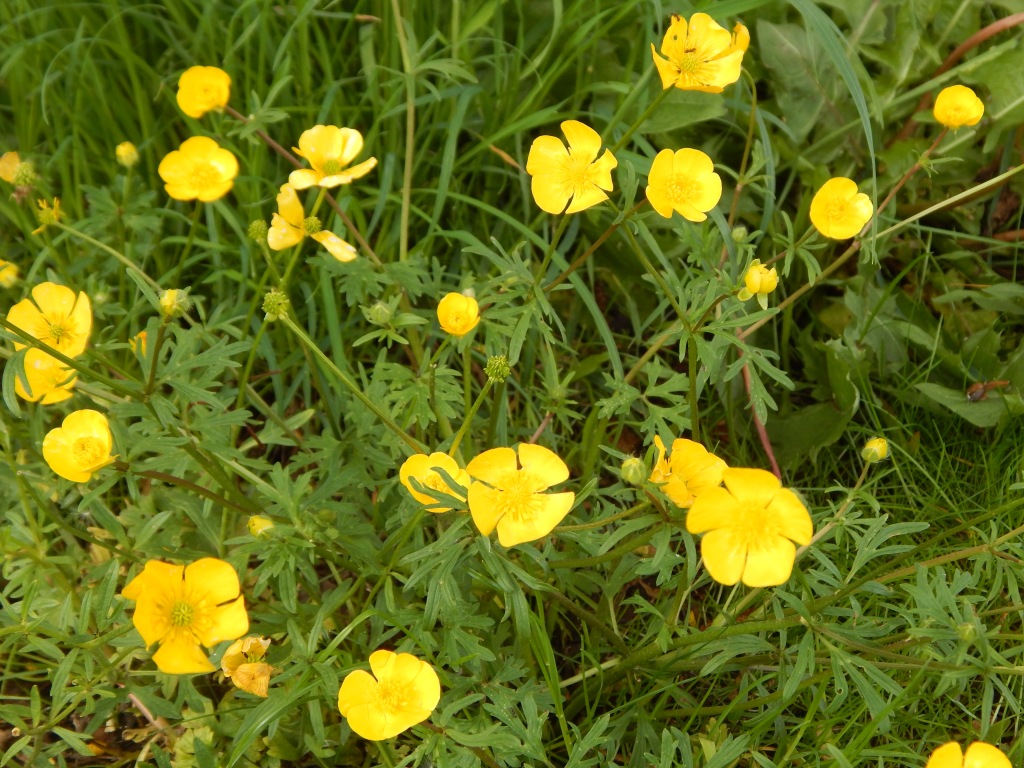
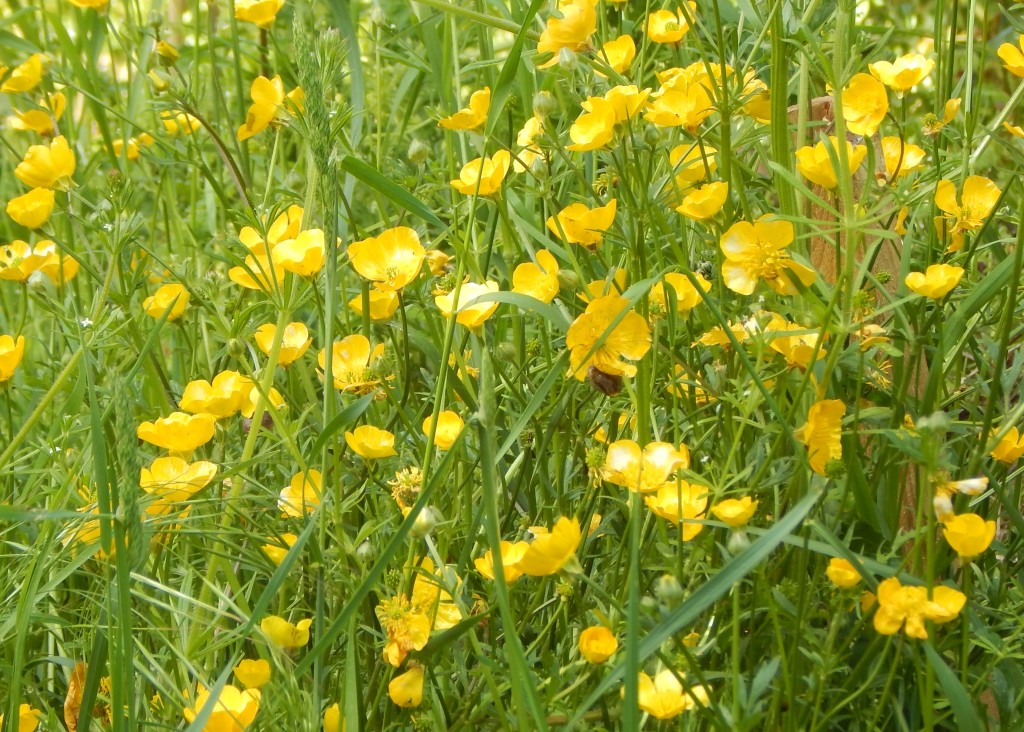
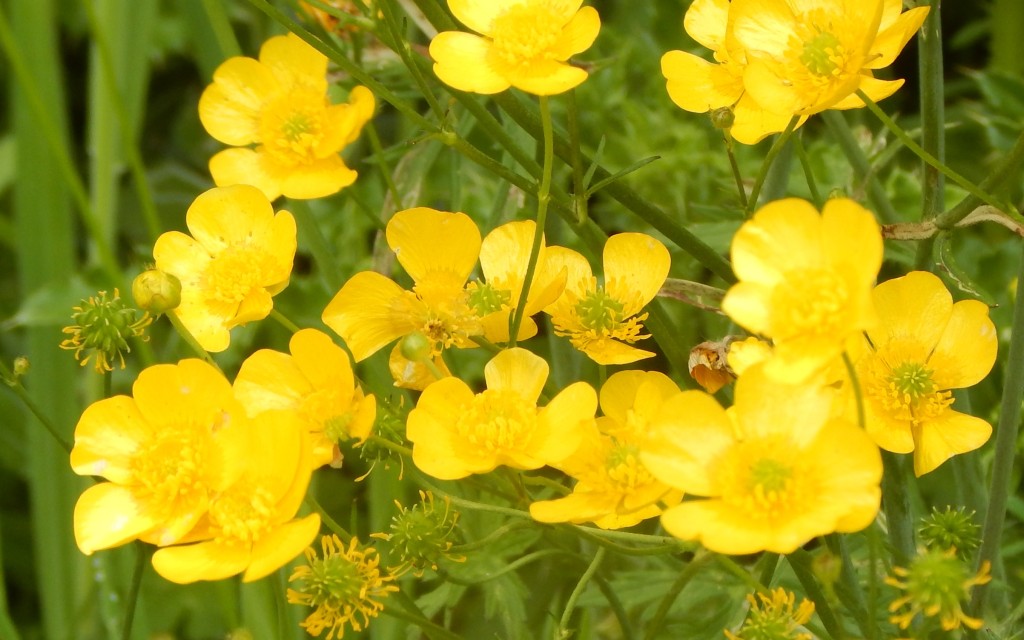
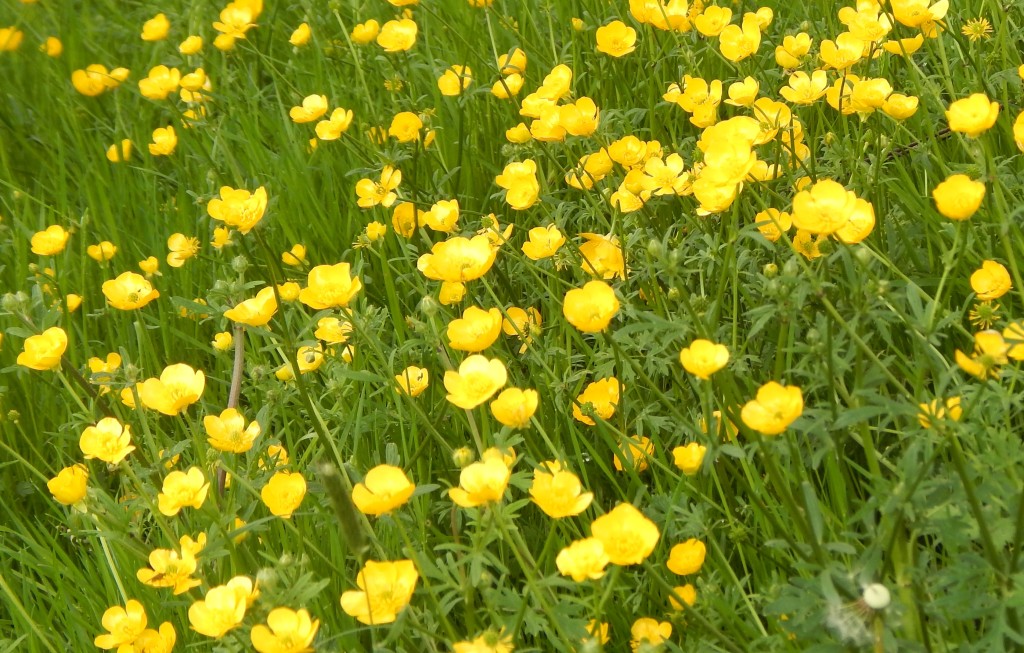
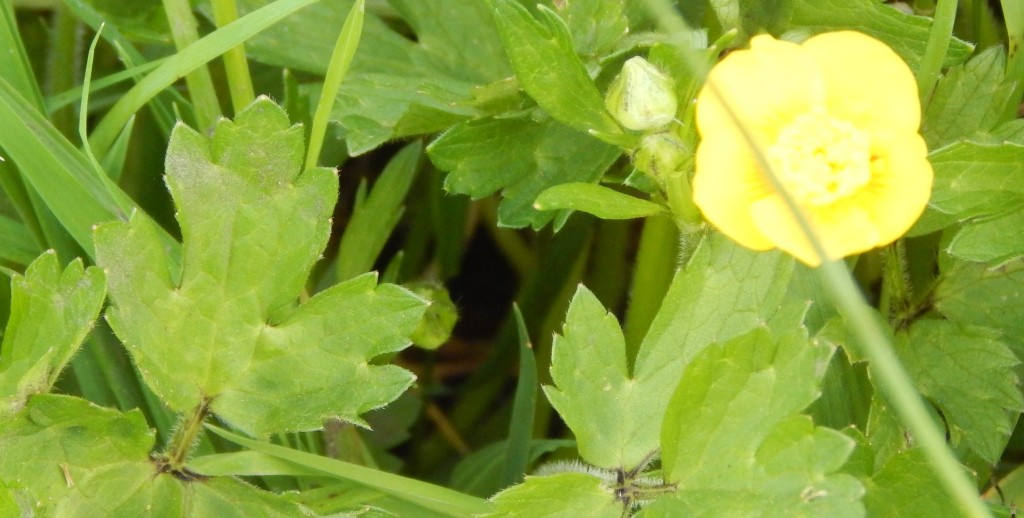

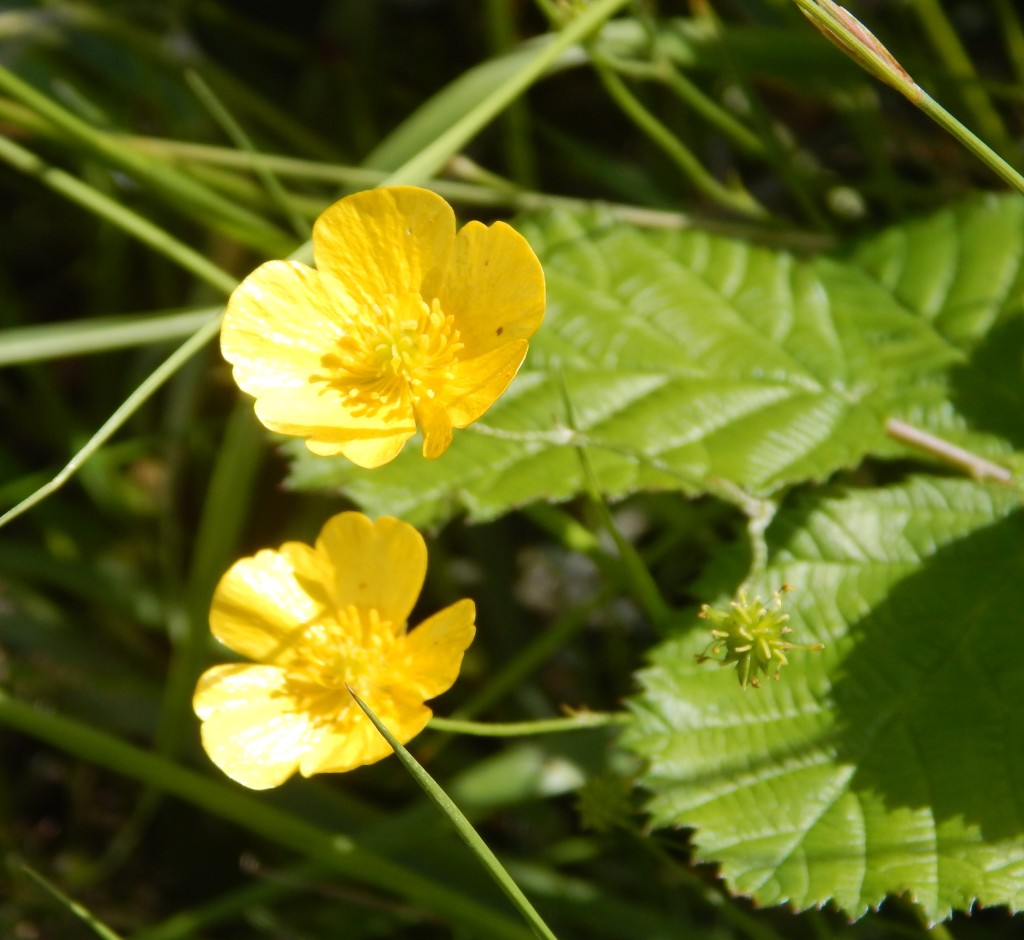
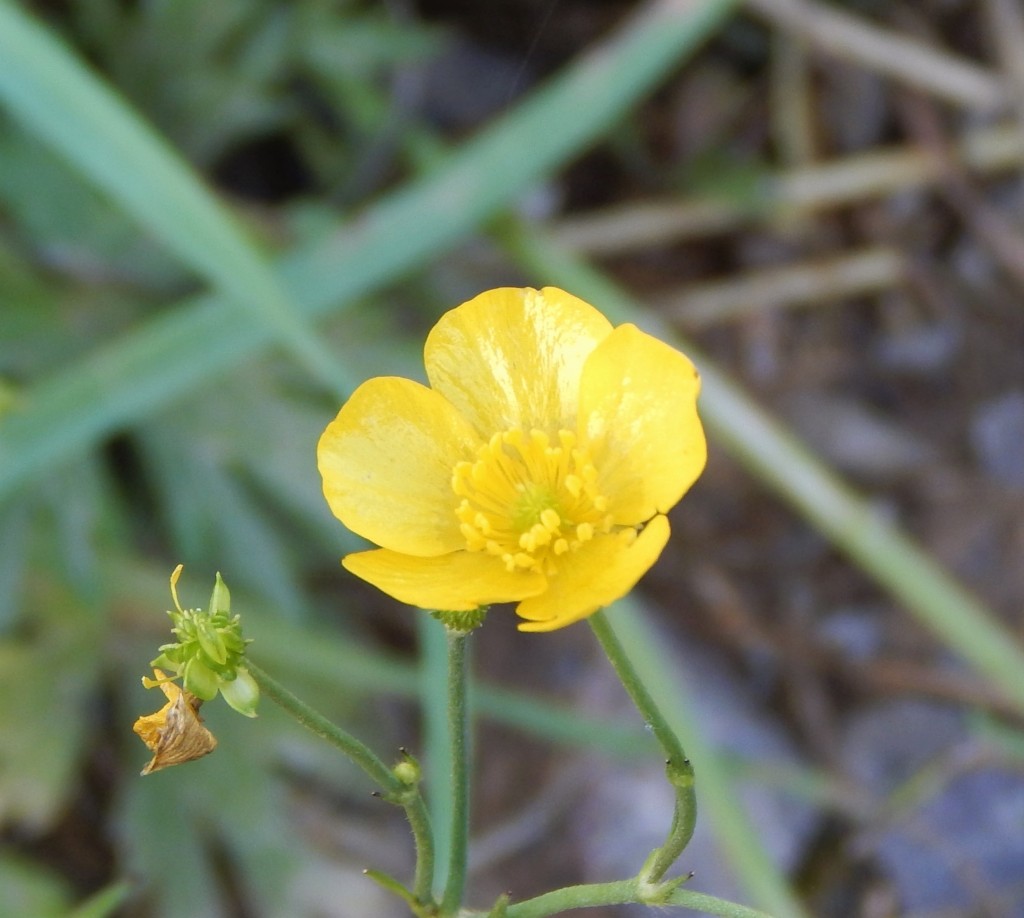

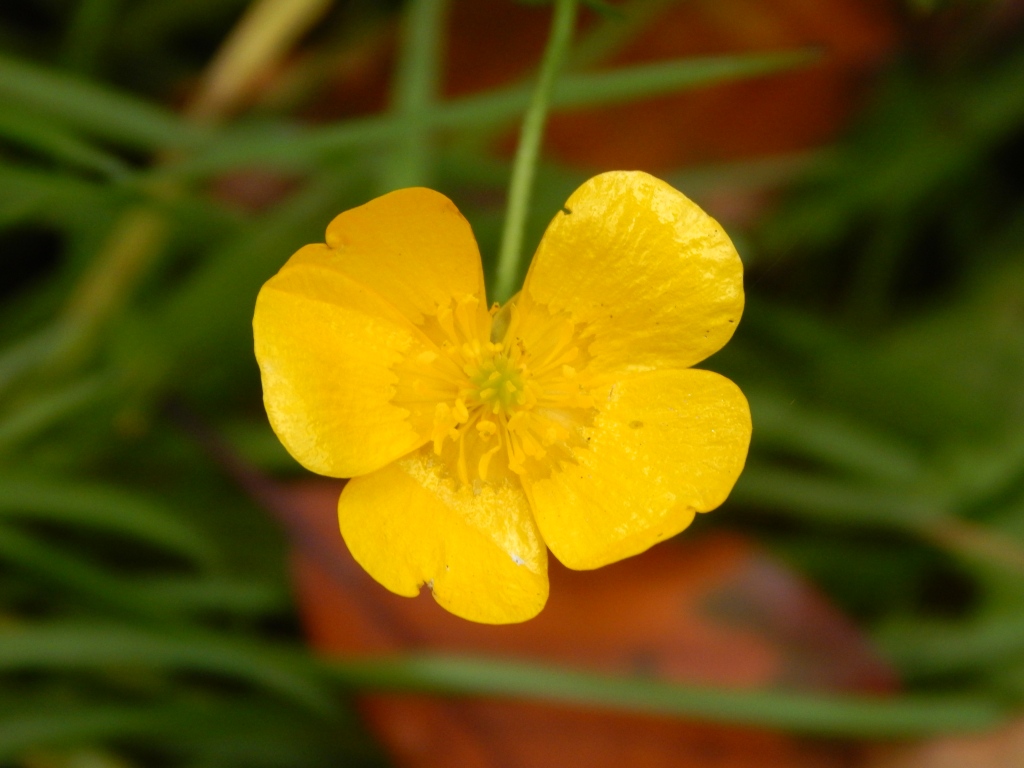

Water-Crowfoot
Ranunculus aquatilis is native to most of Europe and parts of North America and North Africa. It is unlike our other buttercups and is often seen as an unwanted river weed. It grows in water, in shallow streams.
It has branching thread-like leaves in fast-flowing water. It also has floater leaves that prop up flowers. the flowers resemble those of other buttercup species but are smaller and white with a yellow centre.
I see it a few metres from my home in the River Chelt. A single well-rooted plant can form an extensive mat of several metres in length. It is available as a cultivated species for garden ponds.
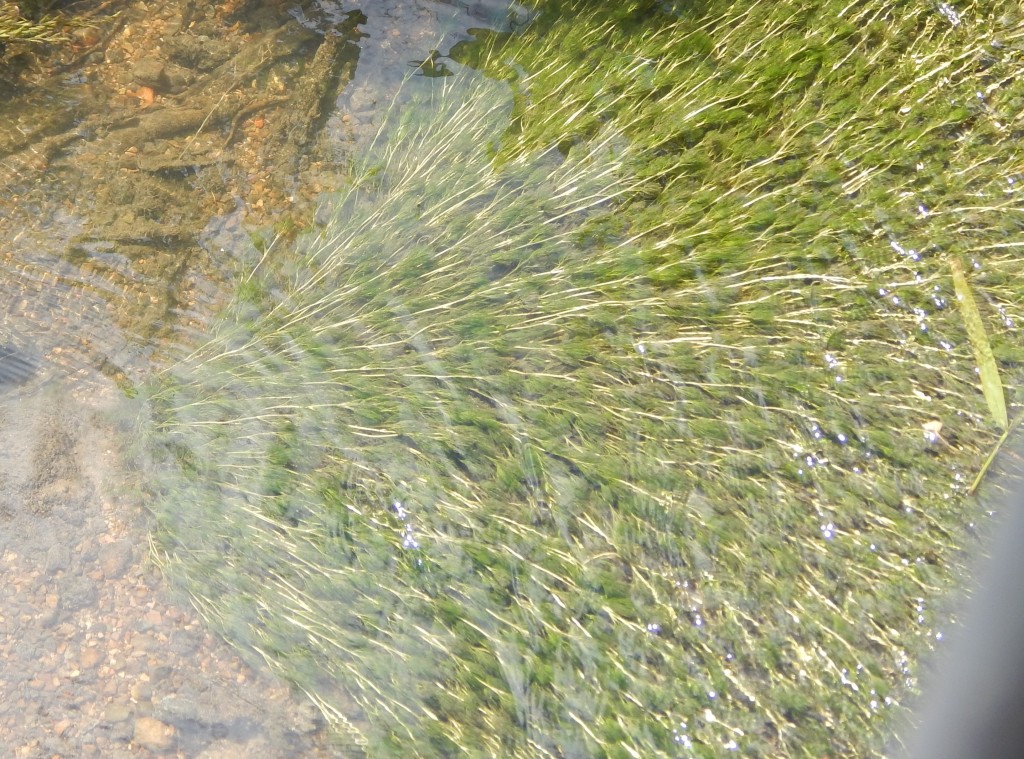
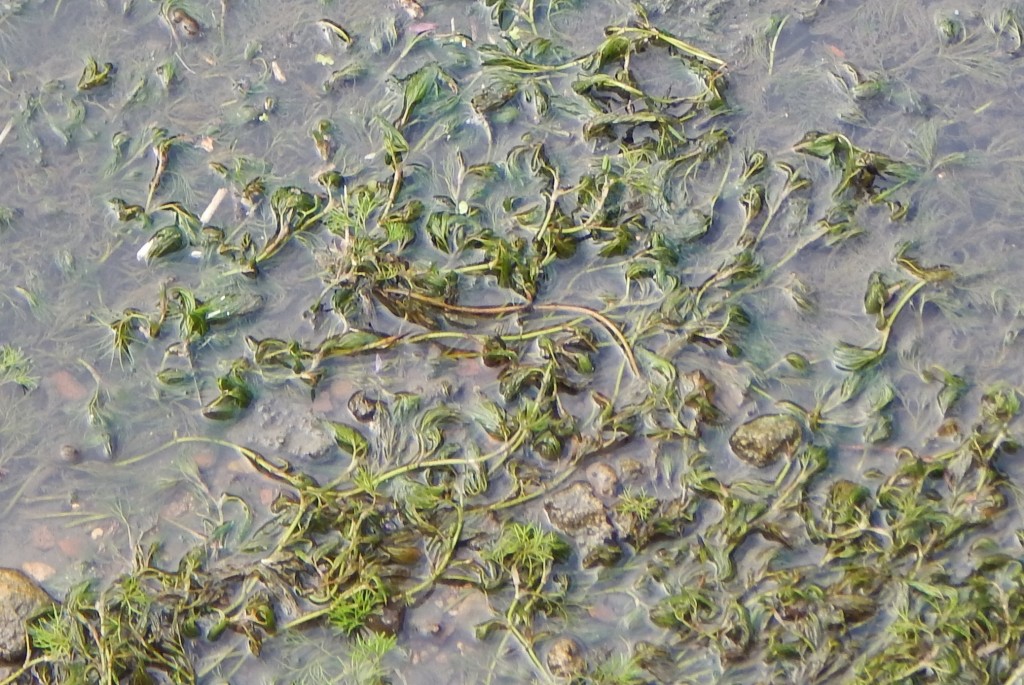



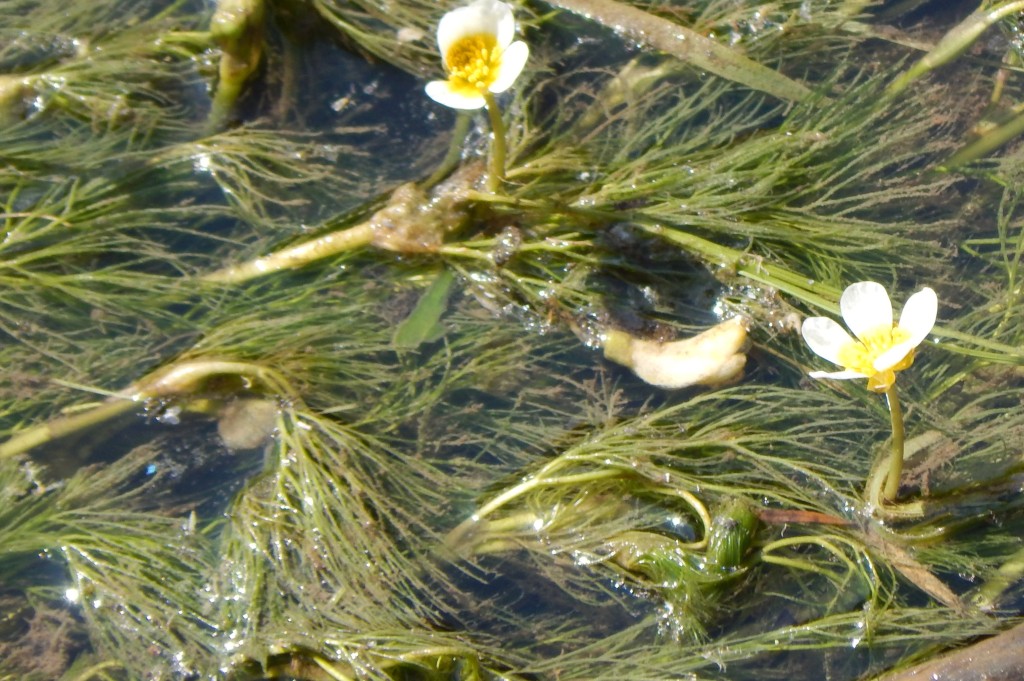
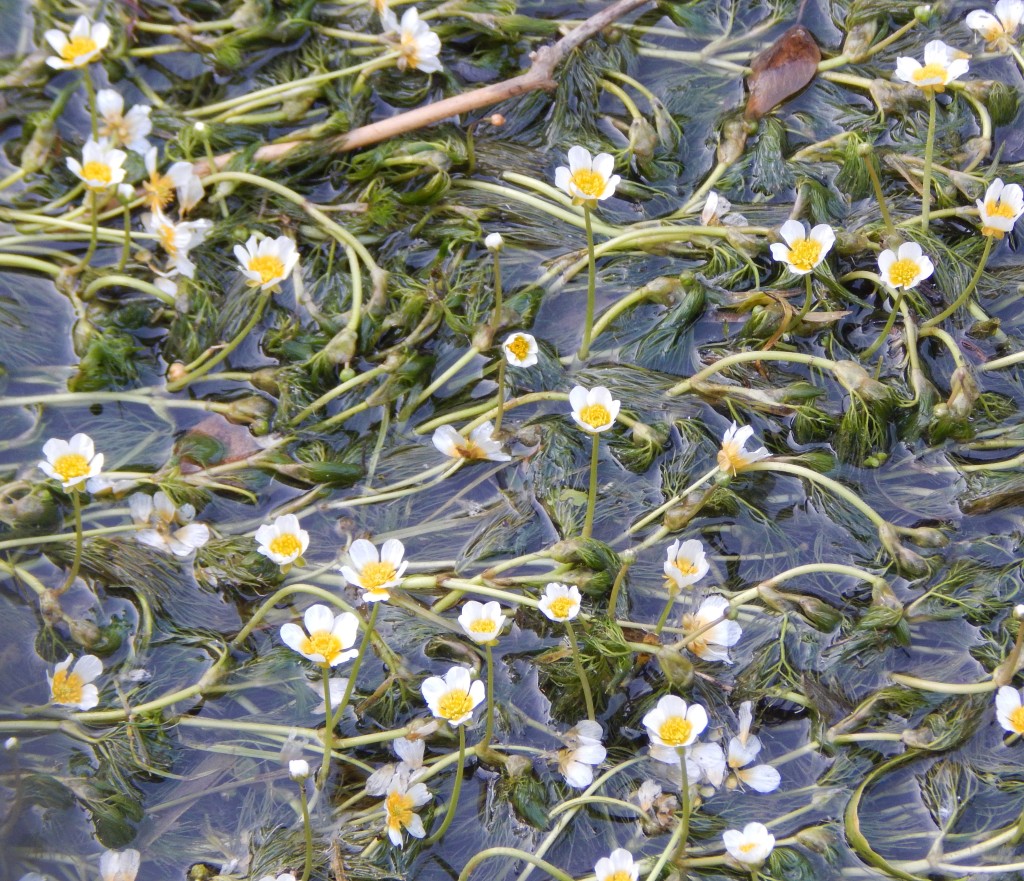
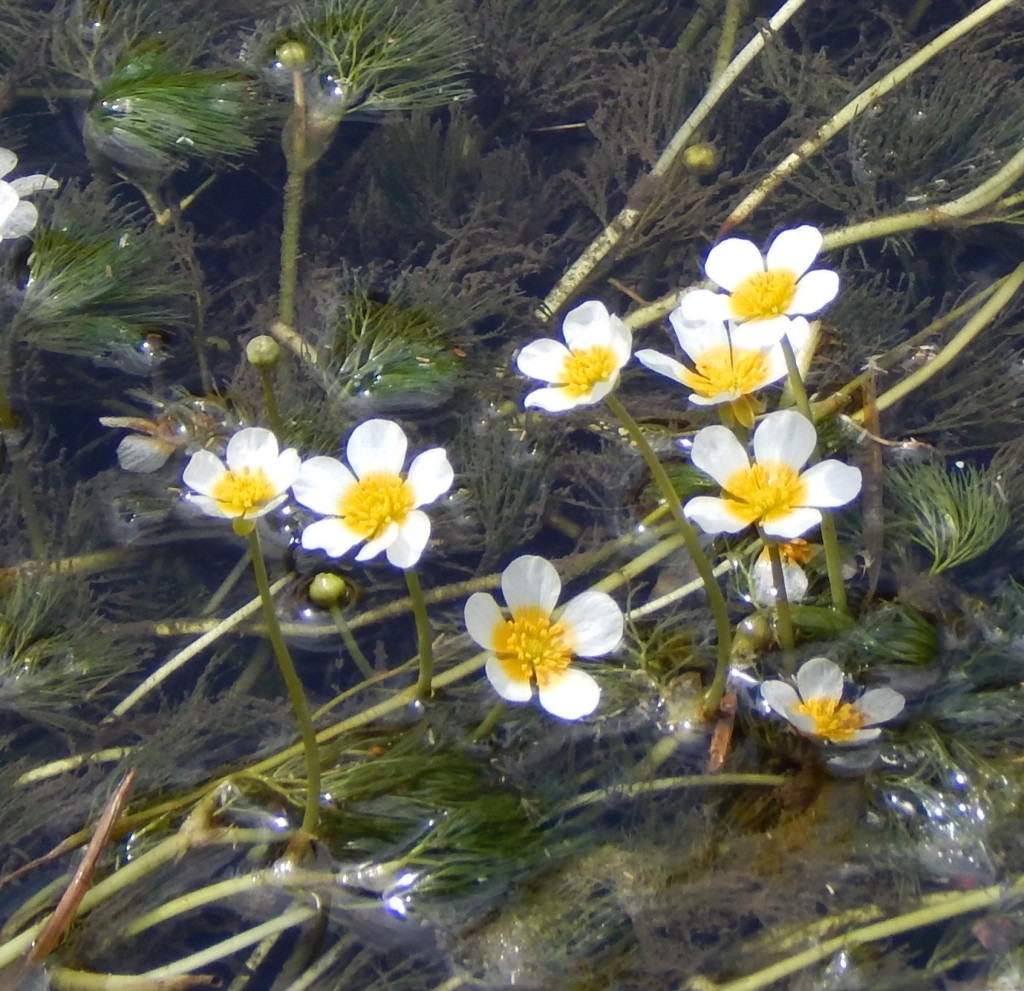
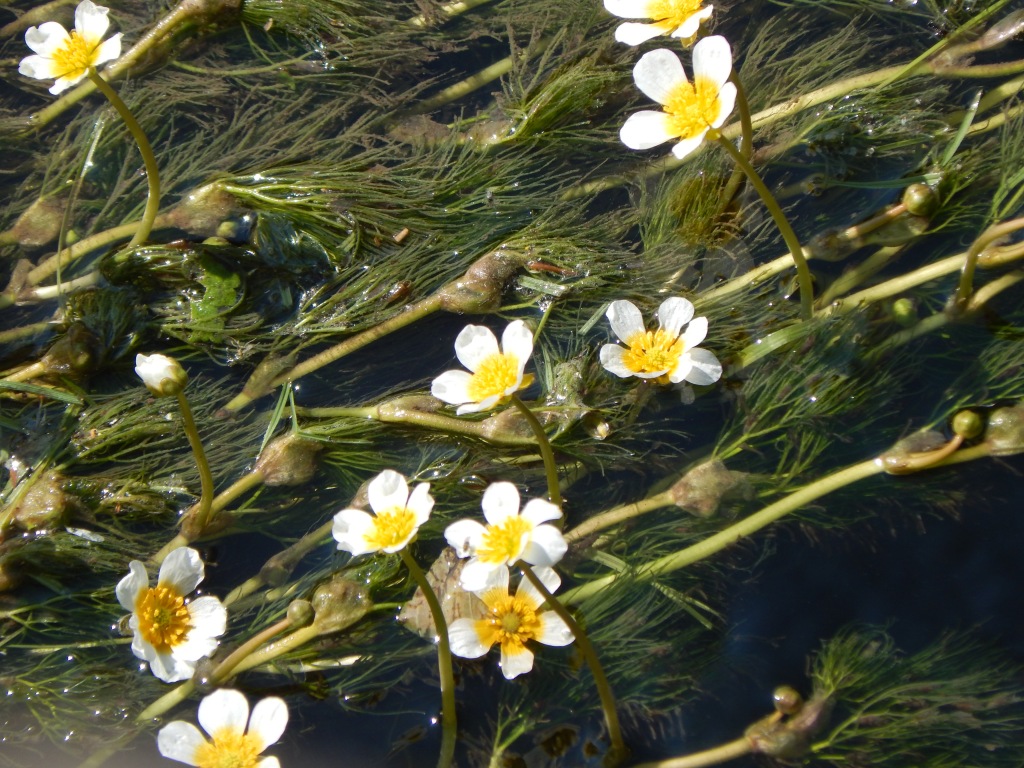
Other Notes
More than twenty species of Ranunculus can be found in the UK. I have not attempted to identify my pictures to species because you will normally just notice the flowers, which are very similar.
Many types of Ranunculus (from several species and hybrids) are available as cultivated garden plants but they look nothing like the common yellow flowers we know as buttercups. Like cultivated [305] Roses, they may have much larger flowers with many layers of tightly packed petals in almost any colour.
